Five years ago, I wrote a blog by the same name. It was back in the days when I purposely limited my blogs to no more than five or six hundred words (my Millennial friends told me this was the “norm”). I’ve re-read some of those blogs and frankly, I’m embarrassed. First, my writing style has evolved (and hopefully, improved). Second, I could have added so much more interesting information had I not listened to my friends. Another difference between then and now is the number of images we used. Our blogs today use as many images as I can find that add value to the story. In the past, one or two images made it into the story. I guess this is what you call progress. So, I’ve decided to re-write some of the more popular blogs and expand both the story as well as images. I hope you enjoy this one (again).
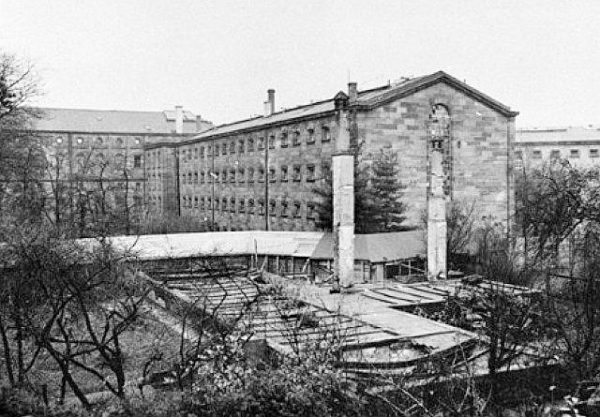

Did You Know?
Did you know that I promised you another story about birds? You may recall the blog, The Wrens (click here to read the blog), that was about a small group of very intelligent and clever women who defeated the Nazi U-boat wolfpacks. During World Wars I & II, another group of women left their domestic lives to serve their country. These were the women who packed munition shells with toxic and potentially explosive chemicals. They risked losing fingers, hands, arms as well as burns and blindness. However, the one work-related symptom almost all of them suffered was turning yellow. Their hair turned blonde and skin turned yellow. The women became known as “The Canaries.” Some of the women gave birth to yellow babies. The babies were called “Canary Babies.” The women took all of this in stride and basically said, “This is what happens” and that was it. I have minimized the danger these brave women faced each and every day. Please click here to read more.
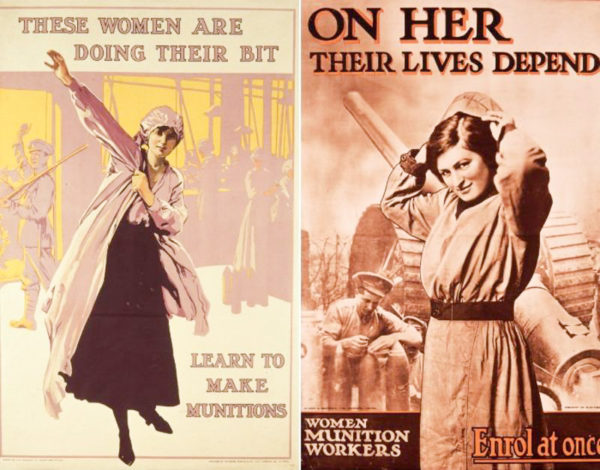
1:11 a.m. 16 October 1946
At 1:11 a.m. on Wednesday, 16 October 1946, Joachim von Ribbentrop walked into the Nuremburg prison gymnasium where three black-painted wooden scaffolds stood⏤two were used alternately while one was a backup. Symbolically, Hermann Göring was supposed to have been the first Nazi war criminal to hang but two hours earlier, he committed suicide by poison. So, von Ribbentrop was afforded the honor (or dishonor?) of being the first to hang.
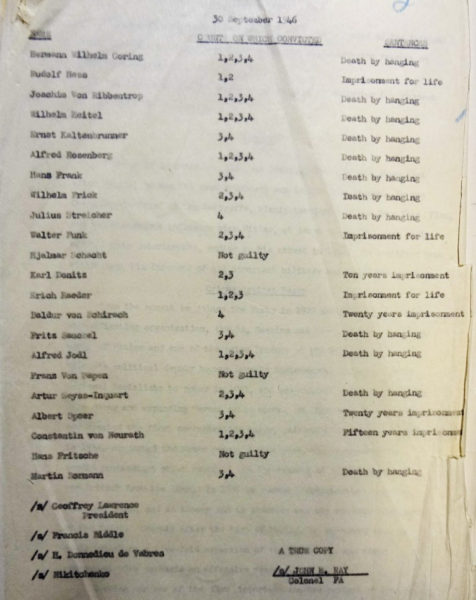

As von Ribbentrop dangled from the rope, former Field Marshal Wilhelm Keitel was brought in and walked up thirteen steps of the second scaffold, had the rope adjusted around his neck, and dropped six feet through the trap door. It took 28-minutes for Keitel to die. Observers wrote that it was obvious he died from strangulation and not as a result of a broken neck from the “long drop.”

Following a cigarette break for the witnesses, former SS-Obergruppenführer Ernst Kaltenbrunner walked into the gymnasium at 1:36 a.m. As head of Nazi security forces, Kaltenbrunner reported directly to Heinrich Himmler and was responsible for the Schutzstaffel (SS), Gestapo, and the extermination camps. Sixteen minutes later, Kaltenbrunner was declared dead.
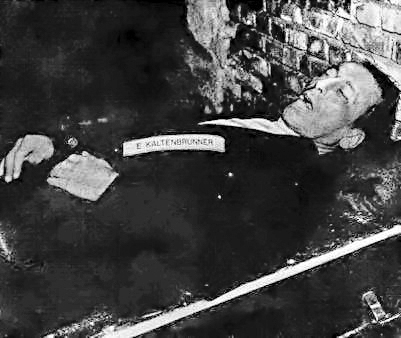
Seven former senior Nazi leaders and now convicted war criminals, followed Kaltenbrunner. The last condemned prisoner, Arthur Seyss-Inquart, dropped through the trap door at 2:45 a.m. and was pronounced dead at 2:57 a.m. The executioner, MSgt. John C. Woods later said, “Ten men in 103 minutes. That’s fast work.” Speculation has been made that Woods botched his job in several ways: he miscalculated the length of the drop and the trap door was too small for the men to clear cleanly. Or did MSgt. Woods want these men to suffer and deliberately “botch” the hangings?
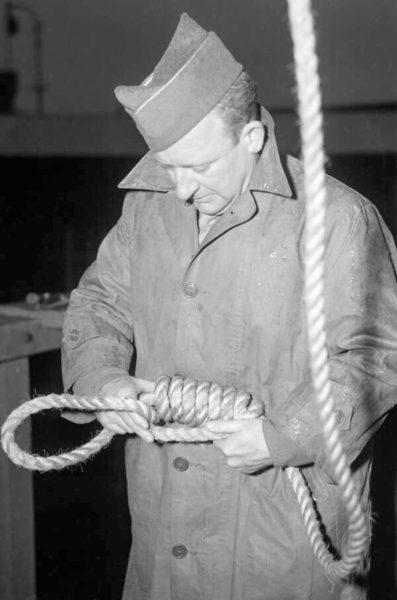
What was some of the evidence that contributed to the death penalty for several of these men and in particular, Keitel? One piece of evidence was the Nacht und Nebel, or Night and Fog decree issued by Hitler on 7 December 1941.


Nacht und Nebel Erlass (NN)
The Night and Fog Decree was very simple. Anyone designated as a NN prisoner would disappear without any trace. No one, including the family, would be told the fate or the whereabouts of the prisoner and all personal possessions would be destroyed. Initially, the decree was primarily aimed at political prisoners, résistants, and foreign agents (e.g., Special Operations Executive). Field Marshal Wilhelm Keitel (1882−1946) was Chief of Staff of the High Command of the Armed Forces (OKW). He was devoted to Hitler and without question, complied with all of the Führer’s commands, decrees, and policies. His colleagues saw him as a military yes-man. Behind his back, Keitel was referred to a “Lakeitel,” or the lackey⏤Hitler’s lackey. He was always nodding in agreement to anything Hitler said and another label was attached to Keitel: “Nickesel,” or a toy donkey with a constantly nodding head.
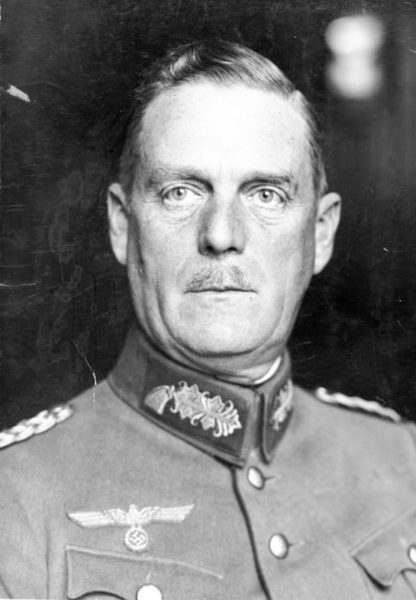
Keitel’s time in the witness stand at Nuremberg lasted two and a half days. Keitel’s defense was that he was only carrying out Hitler’s orders. The former field marshal saw everything in black and white: all decisions were political (Hitler) and soldiers carried out the orders supporting those decisions. In other words, the army was a tool of the politicians. Therefore, Keitel had no moral, ethical, or military responsibility in those actions and he could not connect his orders with the consequences of the orders.
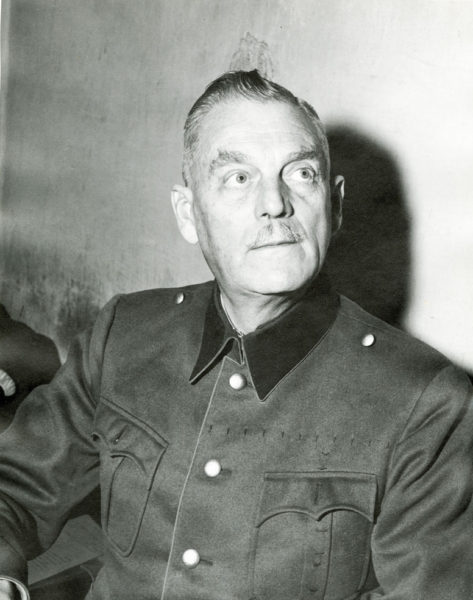
Like most of the other defendants’ response to cross-examination, Keitel blamed Hitler. It was Hitler who made all the decisions. It was Hitler who gave the orders and determined strategy. It was Hitler who decided what methods to use. The Allied prosecutors did a masterful job in getting Keitel to admit to the crimes as “regrettable,” “rebelling,” and “illegal.” He essentially was admitting that crimes had been committed and the Nacht und Nebel decree was one of the specific orders used against Keitel.
“Effective and lasting intimidation can only be achieved whether by capital punishment or by means which leave the relatives and the population in the dark about the fate of the culprit. Deportation to Germany serves this purpose.” ⏤Field Marshall Wilhelm Keitel Nacht und Nebel Decree 12 December 1941
He confessed to writing the decree, signing it, and ordering his subordinates to implement it. Keitel’s admission to this as well as signing and implementing the Commando Order and the Commissar Order were the foundation of his conviction for war crimes (click here to read the blog, Hitler’s Commando Order). All of these orders violated the Geneva Convention and other international agreements signed by Germany.
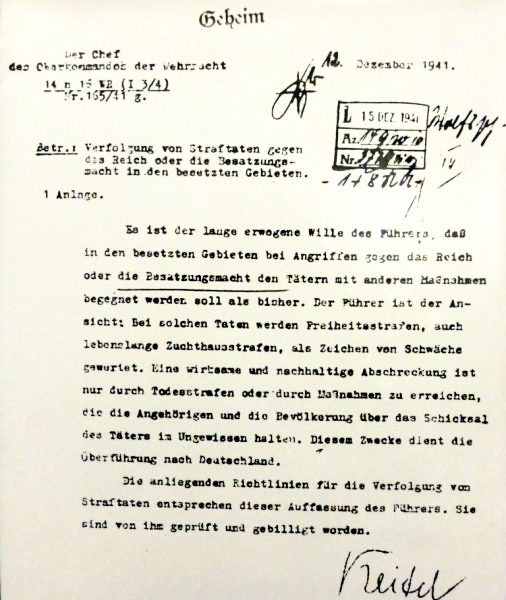
Carrying out Nacht und Nebel orders fell to the Schutzstaffel (SS) including the Gestapo and the Sicherheitsdienst (SD)⏤the SS was declared a criminal organization by the Allies and its members were automatically deemed criminals without the protections afforded other German military personnel. Evidence provided at the trial included arbitrary arrest, torture, and execution of prisoners, the taking and execution of hostages, rounding up foreign workers for slave labor, the execution of Allied commandos and captured airmen, and of course, the extermination camps and mobile execution squads known as the Einsatzgruppen. Sandwiched into all of these disgusting activities was Nacht und Nebel.
Disappearing Without a Trace
The number of prisoners who disappeared as NN victims was never established at the Nuremberg Trials. However, it is estimated that more than sixty-five hundred men and women were arrested or captured and held as NN prisoners. The NN decree was enforced in all of the Nazi-occupied countries⏤the majority of NN prisoners came from France, Belgium, the Netherlands, and Norway. On 12 December 1941, Keitel issued the directive and two months later, expanded the decree. If a prisoner wasn’t executed within eight days, they were to be handed over to the Gestapo and deported to Germany in secrecy where they would vanish without any trace. The victims were vernebelt, or “transformed into mist.”
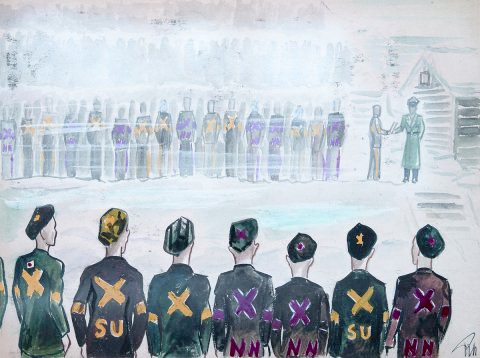
Immediately after the decree was signed and issued by Keitel, it was distributed to the SS and concentration camp commanders. After being captured, a prisoner was typically subjected to interrogation and torture. Some were given a trial where death sentences or prison terms were handed out. Acquittal was rarely an option. Others never received a trial. The NN prisoners were either sent to a concentration camp or prison from which they rarely returned or were heard from again. Two camps were primarily used for NN prisoners: KZ Gross-Rosen and KZ Natzweiler-Struthof.
KZ Gross-Rosen & KZ Natzweiler-Struthof
Gross-Rosen was a network of about one hundred subcamps located in the former East Germany, Czechoslovakia, and Poland. It began in 1940 as a subcamp for the Sachsenhausen concentration camp. Located near a granite quarry (similar to KZ Mauthausen), Gross-Rosen was used primarily as a forced labor camp where inmates died from the Nazi policy of “death through work.” Soviet prisoners were sent here to be executed and the NN prisoners were brutally treated before dying.
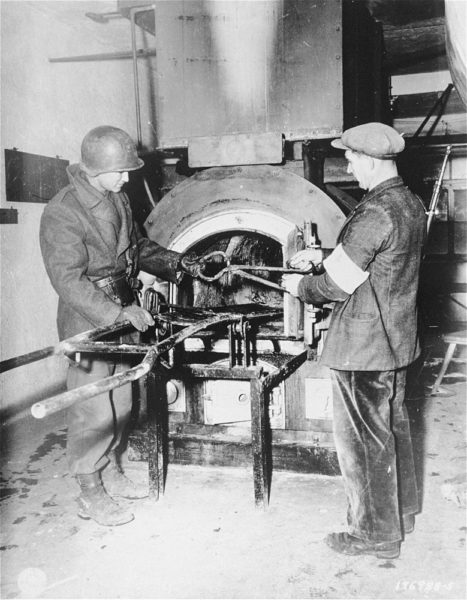
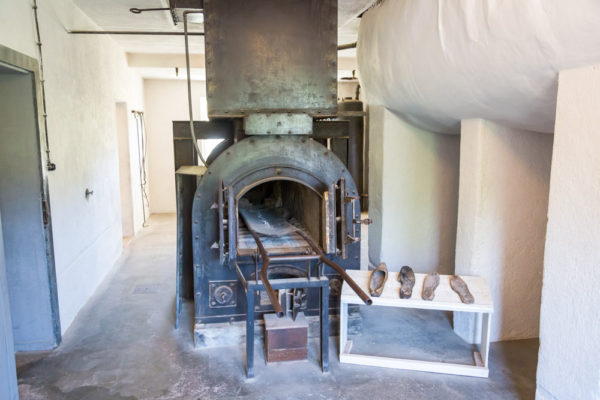
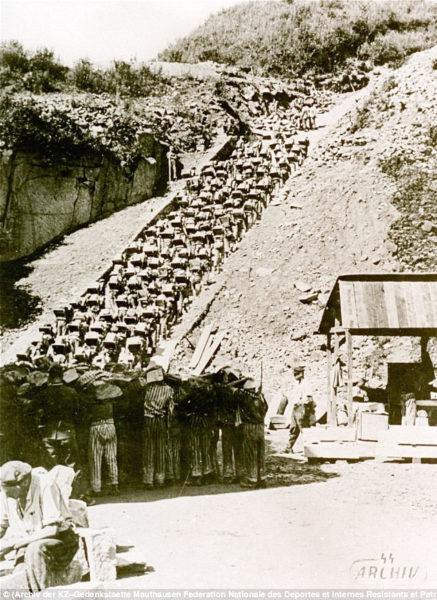
Natzweiler-Struthof was the only concentration camp located on French soil. It was similar to Gross-Rosen in that the prisoners were typically worked to death. It was primarily a men’s camp; however, women were sent there to be executed. Four women agents of British-led Special Operations Executive (SOE) were delivered to Natzweiler on 6 July 1944 for the express purpose of executing them that evening. Their bodies were cremated, and all evidence was destroyed.
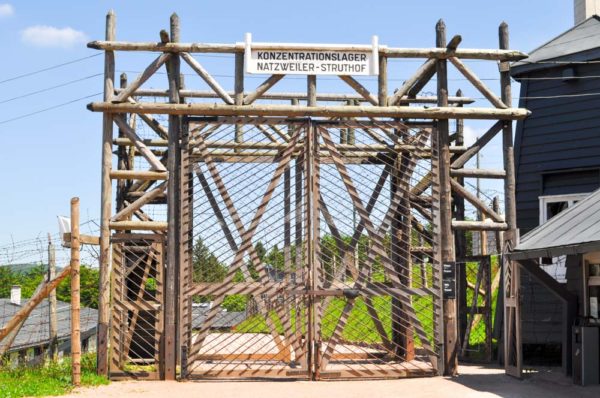
Natzweiler was the site where, on the orders of SS-Obersturmführer Julius Gehrum (1889−1947), Gestapo chief in Strasbourg, one hundred-eight réseau Alliance agents (and NN prisoners) were executed with bullets to the back of their necks during the night of 1/2 September 1944. All evidence of these men and women was destroyed so that the crimes could not be detected. Fortunately, there was a witness who testified about the trucks picking up the prisoners at the detention camp and then returning empty two hours later for more human cargo. Most NN prisoners arriving in the camps had their heads shaved and were issued uniforms that identified their “status.” Nacht und Nebel prisoners had “NN” stitched on the back of their shirts or coats. Unless they were executed immediately, the NN inmates worked twelve-hour days with only a twenty-minute break to eat. Eventually, most were either worked to death or executed.
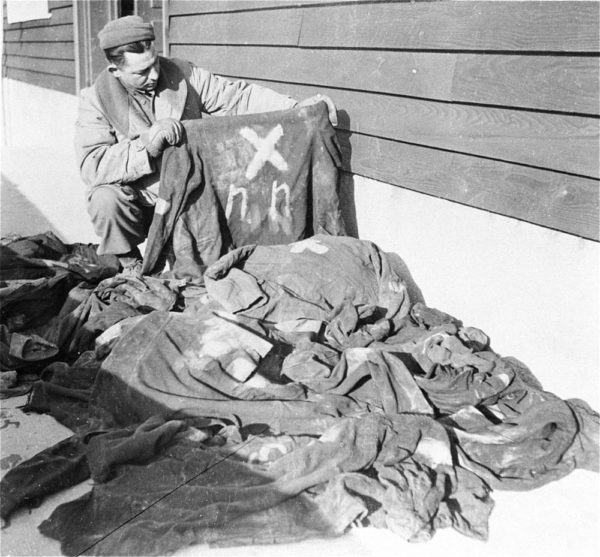
On 30 July 1944, Hitler issued the “Terror and Sabotage” decree that expanded the original Nacht und Nebel orders. Now, all violent acts against the Germans in the occupied countries were to be treated as acts of terror and if caught, the perpetrators were to automatically be classified as a NN prisoner. Within thirty-days, Keitel expanded the orders again to include anyone who endangered any German interest.
“I Was Only Following Orders”
It was the exception that families found out what happened to their relatives. While there was the occasional witness, most of the victims disappeared without any trace. The Nazis destroyed all records (or never recorded the names or fates). Even today, no one knows the exact number of people who vanished. Notable NN prisoners included Léon Faye (Alliance−executed), Édouard Kauffmann (Alliance−executed), Andrée de Jongh (Comet−survived), Noor Inayat Khan (SOE−executed), and Charles Delestraint (FFI−executed).
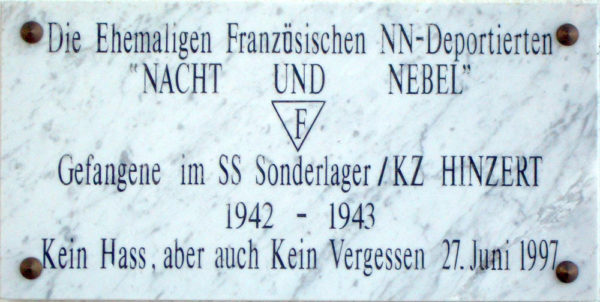
At the Nuremberg trial, Keitel did admit that signing the Nacht und Nebel Decree was “the worst of all” the illegal orders he authorized. Yet, according to Keitel, he was only following orders.
★ Learn More About Night and Fog ★
Fourcade, Marie-Madeleine. Noah’s Ark. New York: E.P. Dutton & Company, Inc., 1974.
MacLean, Col. French L., US Army (Ret.). American Hangman: MSgt. John C. Woods. Atglen, PA: Schiffer Military, 2019.
Martinière, Joseph de la. Les N.N. Le Décret et la procedure Nacht und Nebel (Nuit et Brouillard). Paris: Fédération nationale des deportés et internes résistants et patriotes, 1989.
Resnais, Alain (Producer). Night and Fog (Nuit et Brouillard). Janus Films under exclusive license from Argos Films, 1955.
Shirer, William L. The Rise and Fall of the Third Reich. New York: Simon and Schuster, 1960.
Tusa, Ann and John Tusa. The Nuremberg Trial. New York: Skyhorse Publishing, 2010.
Disclaimer: There may be a chance that after we publish this particular blog, the video links associated with the blog are no longer accessible. We have no control over this. Many times, whoever posts the video has done so without the consent of the video’s owner. In some cases, it is likely that the content is deemed unsuitable by YouTube. We apologize if you have tried to access the link and you don’t get the expected results.
What’s New With Sandy and Stew?
I hope all of you are staying safe and healthy. I know right now that many of us around the world are staying home due to the new waves of COVID. I’m not too sure anyone really has a firm grasp of how to deal with this pandemic or if there is a solution in the near future. We were very sorry to hear some of our friends and families have been directly impacted by the virus.
Like many of our neighbors, Sandy and I are very cautious. However, we are going bonkers not being able to travel. Frankly, we are not sure 2021 will be any better with respect to traveling. We’ve had two of our three scheduled international trips canceled. The biggest disappointment for us is not being able to get together with the many friends we’ve come to know in England and France. Our circle continues to grow and that just means when the time is right, we will get to drink wine and beer with more friends.
Tom (Locomotion Creative) has forwarded the maps to our new book, Where Did They Put the Gestapo Headquarters? We are in the process of editing the maps as well as image selection (this is a long and expensive proposition). I should have a projected publication date for you within the next few weeks.
Thank you to all of you who subscribe to our bi-weekly blogs. It seems there isn’t a day that goes by where we don’t increase our readership. Please let your history buff friends and family members know about our blogs.
Someone Is Commenting On Our Blogs
I’d like to thank Nicole C. for reaching out to us once again. It’s always nice to hear from Nicole and others who have commented in the past. Nicole wrote about our most recent blog, Coco Chanel: Nazi Collaborator or Spy? (Click here to read.) Nicole was born in the building adjacent to the headquarters of the Bonny-Lafont Gang (93, rue Lauriston). It was 1943 and she remembers her mother talking about the screams coming from next door. Nicole’s comments regarding the French attitude toward Coco Chanel are right on (visit the blog to see Nicole’s comments). This is one of the reasons why I wrote (and lecture) about the “real” Coco Chanel.
We also received a comment from John S. the other day. John has been doing quite a bit of research on W. Williams. You all may remember the blog, Racer, Spy, and Erotic Model (click here to read). Several months ago, Claire G. wrote to us about the blog. Claire is the daughter of Frédéric Grover, brother of Mr. Williams. She shared some family tidbits with us and I am grateful.
If there is a topic you’d like to see a blog written about, please don’t hesitate to contact me. I love hearing from you so keep those comments coming.
Why Would You Want to Buy Our Walking Through History Books?
Simple.
You like to travel and experience history and historical events. You like to see original buildings that had a significant impact on the people and events of the history you’re engaged with. You want to know the stories behind the brick and mortar in front of you.
The walking tour books are meticulously researched so you can go directly to those sites and learn about the building’s history as well as an introduction to some of the more interesting people associated with it.
We Need Your Help
Please tell your friends about our blog site and encourage them to visit and subscribe. Sandy and I are trying to increase our audience and we need your help through your friends and social media followers.
Thank You
Sandy and I appreciate you visiting with us. We have some exciting things on the horizon, and we’ll keep you updated as we go along.
Share This:
Follow Stew:
Find Stew’s books on Amazon and iBooks.
Please note that we do not and will not take compensation from individuals or companies mentioned or promoted in the blogs.
 Walks Through History
Walks Through History
Copyright ©2020 Stew Ross

Hi Stew,
Interesting blog – well done – it stimulates the urge to delve deeper into the facts and books on the subject.
Stay safe,
Pat
Thanks Pat. Always good to hear from you. STEW
Hi Stewart,
Thank you for your blogs. I read them with much Interest. Wish you and Sandy a good 2021.
Coby
Hi Coby; Always great to hear from you. Thank you very much for your kind comments. I’m glad you enjoy the blogs. I enjoy writing them for you and everyone else. STEW
There is a photo of the inside of the gymnasium floating around. I saw it a few years ago, together with different photos of the exterior in colour.
Thanks Neil. I have never seen an image of the inside of the gymnasium other than the declassified photos of the bodies of those hanged. There is a photo of the gymnasium’s exterior but I suppose the Allies kept tight control on what could be photographed. By the way, I tried responding to you off-line and the e-mail address you gave got bounced back. Hope you enjoy our bi-weekly blogs. STEW